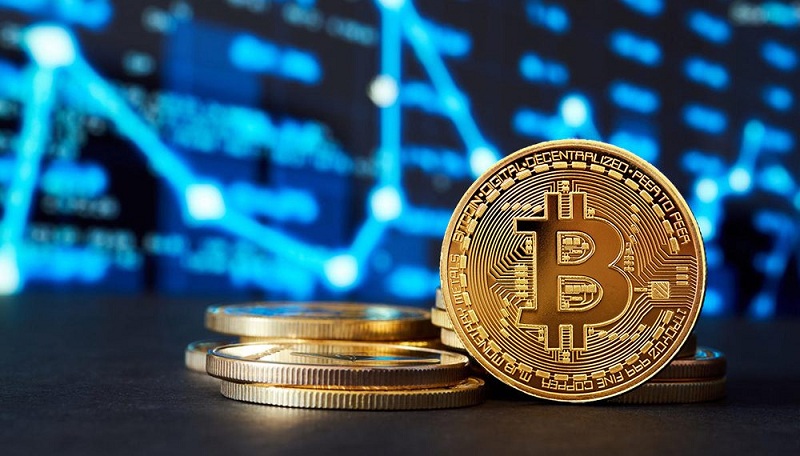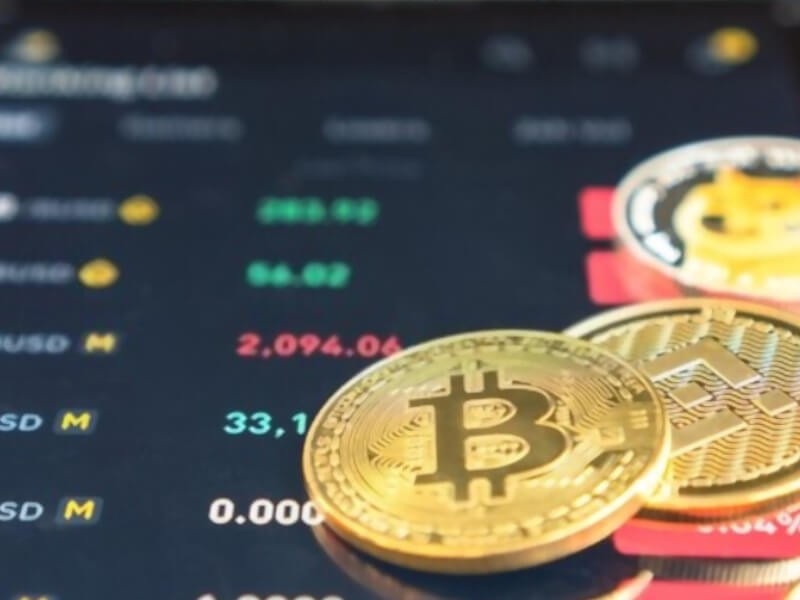How to choose a crypto exchange can make or break your trading success. With the surge of platforms available, it’s key to spot the one that ticks all the right boxes for security, features, and cost. I’ll walk you through a foolproof method to weigh their security measures and regulatory standing, ensuring your journey in crypto trading starts on solid ground. Get ready to dive into platform usability, compare trading fees, and unravel the nuances of managing your funds. By the end of this guide, picking a crypto exchange will be like second nature to you. Let’s start trading safely.
Assessing Security and Compliance on Crypto Exchanges
Evaluating Crypto Exchange Security Measures
When picking a place to trade digital money, think safety first. We want a fort, not a tent. The best crypto exchanges have thick walls – I’m talking strong security steps. They guard your coins like bears protect cubs.
You need to check for two-factor authentication (2FA). It’s a must. Like a second lock on your door. And always look for cold storage. This means they keep most coins offline. Away from hackers.
Find out their track record too. Have they been hacked before? If yes, how did they fix it? Good platforms learn from the past. They get better, stronger. They don’t make the same mistake twice.
Ensuring Exchange Regulatory Compliance
Next up, let’s talk rules. Good exchanges follow them. This means KYC and AML policies are key. KYC stands for Know Your Customer. It’s like a bouncer checking your ID. AML stands for Anti-Money Laundering. Both keep the bad folks out.
Always look for exchanges that play by the book. They should meet the laws of the land. And not just any land – your land. If you’re in the US, the exchange must work by US laws. Same goes for anywhere else.
A credible platform will be clear about what rules they follow. They won’t hide it. They won’t make excuses. If they’re fuzzy on details, walk away.
In a world where crypto rules often change, you want an exchange that stays on top. They should know the latest laws and stick to them. It keeps you and your money safe.
So, remember, when selecting cryptocurrency platforms, think like a pro. Look for top-notch security and an exchange that respects the law. This will make your trading safe and sound. Keep your coins secure, and sleep well at night.

Understanding Exchange Features and Usability
Navigating User-Friendly Crypto Platforms
When picking a crypto platform, user comfort is key. A tough interface can turn trading into a big headache. Let’s keep it easy. You need a platform that makes sense as soon as you hop on. Bigger buttons, clear labels, easy navigation – these are your best friends.
First things first, try the sign-up process. Is it simple? Good sign. Next, look at how you find markets and read charts. No sweat? Perfect. You’ll spend loads of time here, so comfort matters. Today, many top platforms mix ease with power. That’s gold for both new folks and trading pros.
Also, peek at their mobile app. Life’s on-the-go, and so should your trading. Quick checks, swift trades – that’s what a solid app does for you. And keep an eye out for help sections. A great platform guides you. It teaches you the ropes, so you’re not lost at sea.
Analyzing Exchange Liquidity and Volume
Cash flow in an exchange talks volumes — really. It shows you if an exchange can handle your trades, big or small. High trade volume means more folks are in the game. It tells you that buying or selling won’t be as tough. You spot a trade, you lock it in – zip, zap, done.
So how do you check this? Look for the big numbers next to your favorite coins. These are the volume figures. They show how much folks traded in a set time, say 24 hours. Bigger numbers are better. They say loads about the trust in a platform.
And what about liquidity? Picture this: You need to sell your crypto. Fast. You don’t want to wait or lose money on a bad price. If an exchange has good liquidity, someone’s there to buy your crypto quick, at a fair price. No waiting around. You’re in, you’re out, no sweat.
Now, security and price are huge. But let’s not forget how easy a platform feels. We’ve talked about signs of a great platform. Big, clear action buttons, simple menus, easy-to-understand charts, solid mobile apps, and helpful guides. And for trade action? Volume and liquidity are your pals. They make sure you can move your cash when you need to, no hiccups.
Remember, picking a crypto exchange is more than just looking at flashy ads. It’s about how it fits you. It’s about making sure your hard-earned cash moves like it should. Do your homework, test them out, and you’ll be trading with a smile. Trust me, it’s worth that extra mile.
 How to choose a crypto exchange
How to choose a crypto exchange
Comparing Costs and Trading Options
Deciphering Fees for Trading Crypto
When you pick a crypto exchange, you gotta watch the fees. Each trade can have fees. Some charge a lot, others less. It’s key to know this to save money. Let’s keep it simple. Some exchanges charge a flat fee per trade. Others use what’s called a maker-taker model. This means you pay based on your trade’s impact on the market. If you “make” market liquidity, you pay less. If your order “takes” liquidity away, you might pay more.
Also, look out for hidden fees. These can be for deposits, withdrawals, or moving your coins. No one likes surprises, especially when money’s involved. Be sure to check how each platform handles this part. This keeps your trading costs clear.
Spot Trading vs Derivatives on Crypto Exchanges
Now, let’s talk types of trading. Spot trading is buying or selling crypto for immediate exchange. Easy, right? You get the coin now, at the current price. But there’s more. Some traders use derivatives – these are like promises to buy or sell crypto later. They’re based on the future price.
These advanced trades can mean bigger wins or losses. You must understand them well before jumping in. Derivatives are not for beginners. They often involve using margin, which means borrowing funds to trade. This can boost your potential, but it also raises risk.
Spot trading is simpler. It’s just about the exchange rate when you trade. It’s often better for starters. You own the coin, and that’s that. Derivatives are complex. You deal with contracts and potential price moves. You don’t own the actual coin until the contract ends.
Know your limits and learn the ropes before diving into derivatives. Stick to spot if you’re not ready. Pick the trading way that fits your style and knowledge best. Always think of what you can handle and what your goals are.
So, trading fees and types can make a big impact on your crypto journey. Take time to understand them. This ensures you trade smarter and with confidence.

Managing Funds and Support Services
Fiat to Crypto Transactions and Withdrawal Processes
When getting into crypto, you’ll move money a lot. Know how it works fast! Say you want to buy Bitcoin with dollars. You need a platform that lets you do this smoothly. These are “fiat to crypto transactions.”
Now, imagine you’ve made a sweet profit. Want to cash out? Check how withdrawal works. Each platform has its own steps. Some are tricky; some are easy. Pick one that makes your life simple. Look for clear guides on their site. This is crucial for taking cash out without headaches.
What about limits? Some have them low, some high. Figure out what fits your trade size. Don’t get stuck with money on a platform because of small caps.
Also, we have to talk about speed. Some platforms drag their feet, taking days for withdrawals. Others are quick, handing you your cash in hours. Quick is always better! So, do read reviews on this before you choose.
Accessing Crypto Exchange Customer Service
Now, onto the human touch; I mean, customer service. This is big. We all hit snags sometimes. When you do, you need help – quick and helpful. The best crypto exchanges know this. They’ll have your back with solid support.
Live chats, emails, quick replies. These are your best friends in tight spots. Check if they’re there. And 24/7 is best. Crypto never sleeps, so nor should support.
Do they speak your language, though? Not just English or Spanish. I mean, do they make sense? Can they break down tech talk into simple words? If they can’t, keep looking. There’s no use if you don’t get it.
Try them out. Send a question. See how fast and clear they get back to you. This will tell you a lot. If you feel heard and helped, you’re in good hands.
Remember, smooth money moves and real people help make trading a breeze. Get both right, and you’re set for secure digital currency trading. So, choose wisely, and may your trading be stress-free!
In this post, we’ve walked through important parts of choosing a crypto exchange. From checking their security and following the law, to how easy the platforms are to use, we covered it all. We also looked at costs, like fees, and what trading options you’ve got. Plus, how you manage your money and get help when you need it.
It’s clear that picking the right exchange matters a lot. A good one should keep your money safe, follow rules, be easy to use, and not cost too much. And if you run into trouble, help should be there. Remember to look at these things before you decide. Pick smart and trade well!
Q&A :
What factors should I consider when choosing a cryptocurrency exchange?
When selecting a cryptocurrency exchange, it’s crucial to consider several key factors to ensure a safe and efficient trading experience. Firstly, assess the security measures of the platform, including two-factor authentication (2FA) and cold storage options for funds. Secondly, consider the exchange’s liquidity and trading volume, as this affects the ease of executing trades at desired prices. Thirdly, verify the exchange’s compliance with relevant regulations and its reputation within the crypto community. Fourthly, evaluate the user interface for ease of use, especially if you’re a beginner. Lastly, consider the fees associated with trading and withdrawals, as these can impact your overall investment returns.
Are there different types of cryptocurrency exchanges, and which one is suitable for me?
Yes, there are several types of cryptocurrency exchanges, each catering to different user needs. Centralized exchanges (CEX) are the most common, offering a range of services and higher liquidity but requiring users to trust the exchange with their funds. Decentralized exchanges (DEX) provide a trustless environment where trades are made directly between users, offering higher security at the cost of lower liquidity and often a less intuitive interface. Fiat-to-crypto exchanges allow users to buy cryptocurrencies with traditional currencies, ideal for new entrants. Crypto-to-crypto exchanges cater to users who want to trade different cryptocurrencies. Your choice depends on your priorities, such as convenience, security, and the types of transactions you intend to carry out.
How do fees and costs vary among cryptocurrency exchanges?
Fees and costs among cryptocurrency exchanges can vary significantly. There are usually different types of fees to watch out for including trading fees, withdrawal fees, and sometimes deposit fees. Trading fees can be a flat rate or a percentage of the trade amount and may decrease with higher trade volumes or holding the exchange’s native tokens. Withdrawal fees differ by currency and can be fixed or varying depending on network congestion. Some exchanges may charge for deposits, though it’s less common. Comparing these fees across exchanges is important as they can affect your profitability, especially if you trade frequently or in large amounts.
Can I trust all cryptocurrency exchanges, and how do I verify their trustworthiness?
Not all cryptocurrency exchanges are trustworthy, and due diligence is necessary to verify an exchange’s credibility. Start by researching the exchange’s history for security breaches, customer reviews, and its track record in dealing with issues. Check for transparency in its financial dealings and whether it’s regulated by any financial authority. It’s also advisable to see if it has undergone any security audits by reputable third-party firms. A trustworthy exchange should clearly communicate its security measures, fees structure, and offer customer support. Ultimately, trust is built through a consistent and transparent track record, so look for exchanges with a solid reputation in the cryptocurrency community.
What kind of customer support should I expect from a reliable crypto exchange?
A reliable crypto exchange should offer robust customer support to address any issues or concerns users may face. Expect support to be available through multiple channels such as email, live chat, and phone support. The response time should be prompt, with resolutions provided in a timely manner. Some exchanges offer 24/7 support, which is particularly beneficial given the round-the-clock nature of the cryptocurrency market. Additionally, look for an exchange with a comprehensive FAQ section, as well as educational resources to help users navigate the platform and understand trading practices. Good customer support is especially critical for beginners and during times of high market volatility when immediate assistance may be required.



